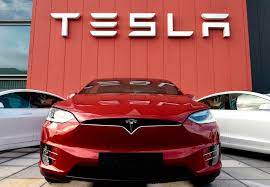Tesla’s (TSLA) revenue and automotive gross margin declined significantly on a sequential basis in 2Q22, ending a string of increases for both key metrics over the past several quarters. While the electric vehicle maker easily surpassed EPS expectations as operating expenses also fell on a qtr/qtr basis, its free cash flow of $621 mln came up short of analysts’ estimates. Despite these blemishes, the initial reaction to TSLA’s earnings report has been positive for a few reasons.
Due to the COVID-related lockdowns in China and the associated shutdown of TSLA’s Shanghai facility, a rough quarter was anticipated and baked into the stock. Since early April, shares have plunged by 35%, setting up a rebound on results that are better-than-feared. Ahead of the print, there was some concern that TSLA would post a free cash flow number that was much closer to breakeven.
More importantly, TSLA maintained its delivery guidance, stating that it still expects to achieve 50% average annual growth in vehicle deliveries over a multi-year horizon. During the earnings conference call, Elon Musk commented that the company has the potential for a record-breaking second half of the year.
To reach that 50% growth target this year, the company will need to produce about 1.4 mln vehicles in 2022.
So far in 2022, TSLA has produced approximately 564K vehicles. Therefore, the company will need to make an average of 418K vehicles in Q3 and Q4 to achieve its goal. To put this into perspective, TSLA’s highest quarterly production number was 305,840 in 4Q21.
Musk offered an optimistic view on inflation and the supply chain, stating that costs may come down later this year. He even suggested that TSLA may reduce car prices after the company lifted prices several times recently to offset inflationary pressures. An easing of raw material costs in 2H22 could coincide with improving manufacturing efficiencies at its new Berlin and Austin factories, enabling automotive gross margin to reverse higher.
It was a difficult quarter, as reflected in the 10% sequential drop in revenue and the 500 bps contraction in automotive gross margin from Q1. In fact, the quarter was so turbulent that Musk decided to sell 75% of the company’s Bitcoin holdings to shore up the balance sheet. This quarter, though, is now in the rearview mirror and a more bullish sentiment is brewing as TSLA is poised to ramp up production in a major way. There are still macroeconomic risks and uncertainties that can stymie TSLA’s momentum, though, including the threat of future lockdowns in China if virus cases increase again.





